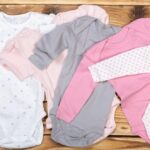In 2023, the maternity clothing market surged past a value of $6 billion, with a projected compound annual growth rate (CAGR) surpassing 3.4% from 2024 to 2032.
The North American region dominated with a revenue share of approximately 32% in 2023, and it is anticipated to experience substantial growth throughout the forecast period, driven by factors such as the increasing influence of social media platforms.
Moreover, the rise in demand for formal plus-size outerwear significantly impacts this growth trajectory.
Competitive Landscape and Opportunities:
As societal acceptance and inclusivity towards diverse body types continue to garner importance, maternity clothing designers have expanded their size ranges to accommodate various shapes and sizes.
Inclusive sizing ensures that expecting mothers of all body types can find beautifully comfortable clothing to accommodate their changing bodies during pregnancy. Expectant mothers are increasingly seeking versatile maternity wear that can be worn during and after pregnancy.
Figure-hugging dresses, flexible leggings, and flowing tops with discreet nursing options are popular transitional pieces during and after pregnancy. These products offer cost-effectiveness and extend the lifespan of maternity wear.

Additionally, expectant mothers may opt for non-maternity alternatives such as oversized or stretchy clothing from conventional fashion retailers as more affordable substitutes for specific maternity wear items.
The introduction of fashionable and practical non-maternity wear solutions may pose a competitive challenge to the maternity clothing industry, particularly in price-sensitive segments.
In response to these market dynamics, businesses in the maternity clothing sector are innovating to offer stylish yet practical solutions that cater to the evolving needs and preferences of expecting mothers.
The convergence of fashion and functionality is driving the development of maternity wear that not only provides comfort and support during pregnancy but also offers versatility and longevity beyond the maternity period.
Market Analysis
The maternity clothing market exhibits cyclical and seasonal demand patterns, with spring and summer emerging as peak selling seasons.
Manufacturers and retailers may encounter difficulties in effectively managing inventory levels and predicting demand, leading to fluctuations in sales revenue and profitability.
Product Segmentation:
The maternity clothing industry is segmented into maternity tops, bottoms, outerwear, lingerie, and sleepwear. In 2023, maternity tops led the market, accounting for approximately 39% of the market share, projected to reach around 40% by 2032.

Maternity tops are designed to accommodate the growing belly and changing body shapes of expectant mothers while providing comfort. They often feature stretchy fabrics, adjustable features, and spacious cuts to ensure expectant mothers feel comfortable and at ease throughout their pregnancy.
Modern maternity tops come in a variety of stylish designs, colors, and patterns, reflecting current fashion trends. They offer expectant mothers a range of options to express their personal style during pregnancy, whether casual, formal, or trendy.
Material Trends:
In terms of materials, the market is divided into cotton, polyester, spandex, modal, among others. In 2023, cotton emerged as the dominant force in the maternity clothing industry, generating revenue exceeding $2.3 billion, projected to reach around $3.2 billion by 2032.
The soft, breathable, and hypoallergenic properties of cotton make it an excellent choice for expectant mothers’ wardrobes. Cotton maternity wear is becoming increasingly popular due to its significant moisture-wicking capabilities.

Cotton fabric is renowned for its ability to absorb sweat, keeping expectant mothers cool and dry, especially in hot climates. This characteristic enhances comfort and overall health throughout pregnancy, contributing to why expectant mothers prefer cotton maternity wear.
Wholesale Guide for Maternity Clothes
Understanding Wholesale in the Maternity Fashion Industry:
Wholesale in the maternity clothing industry involves the bulk purchase of maternity wear from manufacturers or distributors at discounted prices, with the intention of reselling the products to retailers or directly to consumers at a profit. This business model offers several advantages, including lower per-unit costs, access to a wide range of products, and the ability to buy in bulk to meet demand fluctuations.
Finding Reliable Wholesale Suppliers:
When sourcing maternity clothing wholesale, it’s crucial to partner with reliable and reputable suppliers. Look for suppliers with a track record of quality products, timely delivery, and good customer service. Attend trade shows, join industry associations, and network with other retailers to discover potential wholesale partners. Additionally, conduct thorough research online and read reviews to assess the credibility of suppliers.
Negotiating Wholesale Deals and Pricing Strategies:
Negotiating wholesale deals involves discussing terms such as pricing, minimum order quantities, payment terms, and shipping arrangements with suppliers. Be prepared to negotiate for favorable terms based on factors such as volume of purchase and long-term partnership potential. Implement pricing strategies that balance competitiveness with profitability, taking into account factors such as market demand, product uniqueness, and overhead costs.
Inventory Management and Stock Rotation:
Effective inventory management is essential in the wholesale distribution of maternity clothing. Maintain optimal stock levels to meet demand without overstocking or understocking. Implement inventory tracking systems to monitor stock levels, track sales performance, and identify fast-moving versus slow-moving items. Rotate stock regularly to prevent inventory obsolescence and maximize sales opportunities.
5 North American Maternity Clothing Wholesale Suppliers:
KakaClo:KakaClo is a leading wholesale supplier of maternity clothing, offering a diverse range of stylish and comfortable options for expectant mothers.
Akidstar:Akidstar specializes in wholesale maternity clothing, providing retailers with a wide selection of trendy and affordable maternity wear options.
Faire:Faire is a platform connecting retailers with a variety of wholesale suppliers, including maternity clothing providers. They offer a curated selection of maternity wear from different brands.
FashionTIY:FashionTIY is a comprehensive wholesale platform offering a wide range of products, including maternity clothing. They provide retailers with competitive pricing and fast shipping options.
Shestar:Shestar is a wholesale supplier specializing in maternity clothing, offering retailers a variety of fashionable and high-quality maternity wear options.
These suppliers offer a diverse range of maternity clothing wholesale options, including tops, bottoms, dresses, outerwear, and more. Evaluate each supplier’s offerings, pricing, and terms to determine the best fit for your business needs.
Dropshipping Comprehensive Guide for Maternity Clothes
Dropshipping Steps:
1. Choose Your Maternity Clothing Niche:
Identify specific segments within the maternity clothing market, such as dresses, tops, plus-size fashion, etc. Selecting a niche allows you to target a specific audience and tailor your offerings to their needs and preferences.
2. Set Up Your Online Store:
Choose a platform to host your online store, such as Shopify, TikTok, Shoplazza, or any other e-commerce platform. Customize your store’s design and layout to reflect your brand identity and create a seamless shopping experience for customers.
3. Find Reliable Dropshipping Suppliers:
Research and identify reputable dropshipping suppliers specializing in maternity clothing. Look for suppliers with a wide range of products, competitive pricing, fast shipping times, and excellent customer service. One such reliable supplier is KakaClo, known for its quality maternity clothing options.

4. Select Products from KakaClo and Sync to Your Store:
Browse KakaClo’s catalog of maternity clothing products and select items that align with your chosen niche and target market. Use their dropshipping integration tools to seamlessly import product listings, images, and descriptions to your online store with just a few clicks.
5. Promote Your Online Store:
Utilize digital marketing strategies to promote your online store and drive traffic to your product listings. Leverage social media platforms, email marketing, influencer partnerships, and search engine optimization (SEO) techniques to increase visibility and attract potential customers to your store.
6. Handle Orders and Manage Customer Service:
Once orders start coming in, efficiently manage the fulfillment process by forwarding customer orders to KakaClo for shipping directly to your customers. Maintain clear communication with customers throughout the ordering and shipping process to ensure a positive shopping experience. Address any inquiries, concerns, or issues promptly to provide excellent customer service and foster long-term relationships with your audience.
Conclusion
The maternity clothing market presents lucrative opportunities for businesses involved in wholesale and dropshipping operations.
As evidenced by the market trends and analysis, the industry is poised for sustained growth, driven by factors such as increasing acceptance of diverse body types, evolving fashion preferences, and technological advancements in e-commerce.
For wholesalers, understanding market dynamics, product segmentation, and material trends is essential for effectively catering to the diverse needs of retailers and consumers.
By offering a wide range of maternity wear options and maintaining high-quality standards, wholesalers can capitalize on the growing demand for comfortable and stylish maternity clothing.
Similarly, dropshipping presents a viable business model for entrepreneurs looking to enter the maternity clothing market without the need for upfront inventory investment.
By leveraging reputable dropshipping suppliers like KakaClo and implementing effective marketing strategies, dropshippers can create successful online stores and capitalize on the growing demand for maternity clothing.







